ニンジンボクは、日本へは18世紀に薬用で渡来しました。爽やかに香る葉、可愛らしい唇形花。「秘めた思いやり」という花言葉があります。
Five-leaved Chaste Tree was introduced to Japan in the 18th century for medicinal purposes. It is characterized by its freshly fragrant leaves and cute lip-shaped flowers. Its flower language is “secret compassion.”
【仮名】ニンジンボク
【和名】人参木
【英名】Five-leaved Chaste Tree, Chinese Chaste Tree
【学名】Vitex negundo
【誕生】06/ ??
【開花】06, 07, 08月
【花色】Violet
ニンジンボク
ニンジンボクの概要
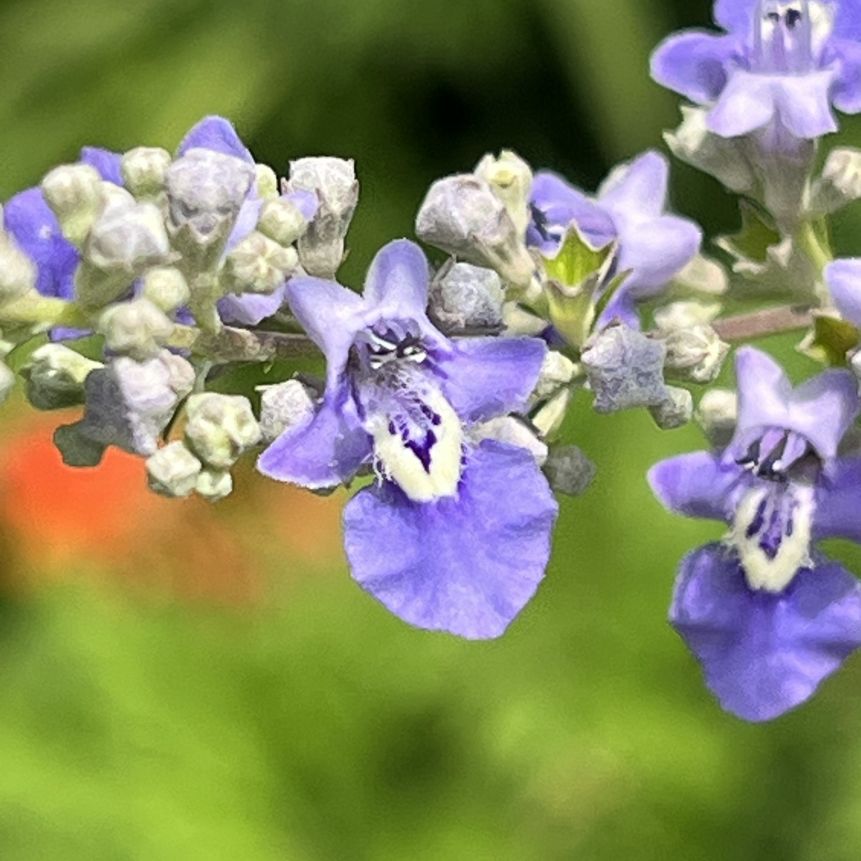
ニンジンボクはシソ科の落葉低木です。原産地は中国で、南アジア、東南アジア、太平洋地域に分布。日本へは18世紀の享保年間に薬用で渡来し、江戸幕府の薬草園から全国へと植栽が広がりました。爽やかに香る葉、可愛らしい唇形花。「秘めた思いやり」という花言葉があります。
ニンジンボクの名前
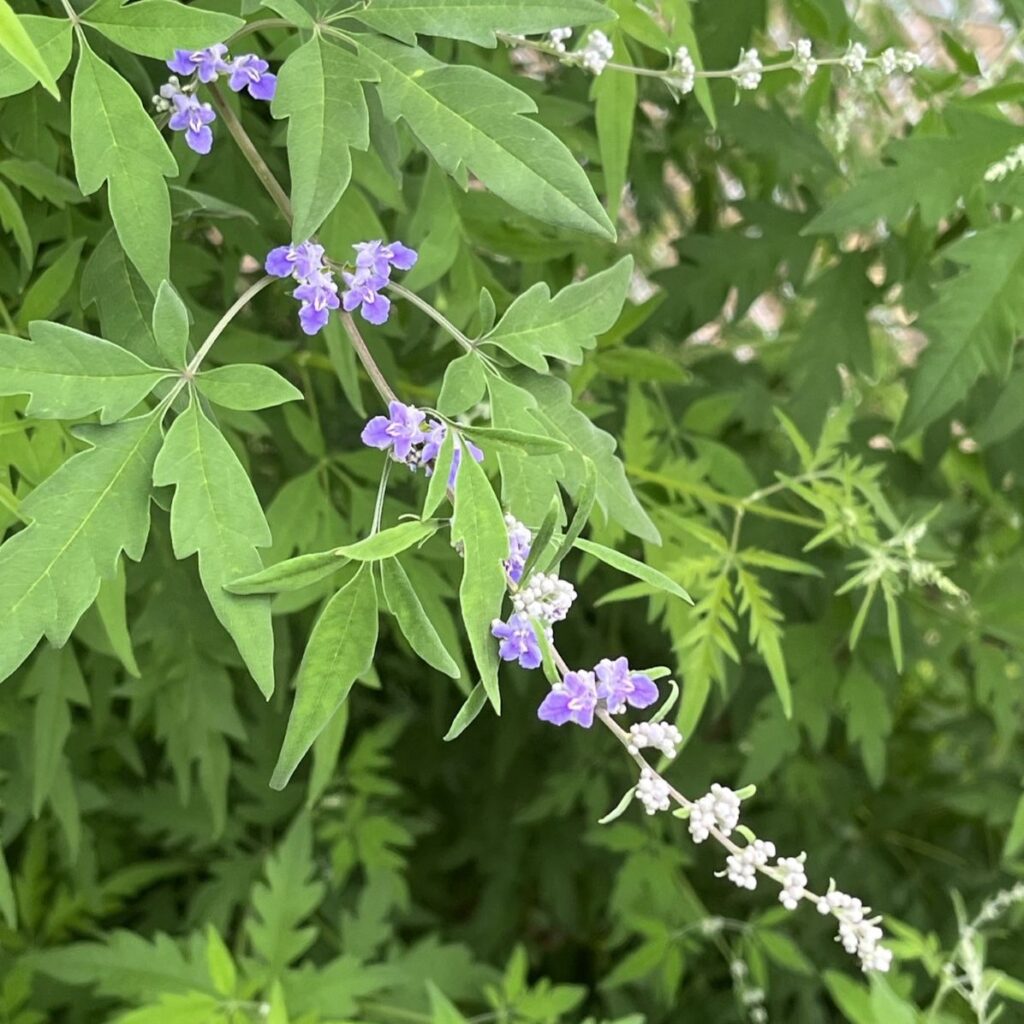
ニンジンボクの和名の由来は、葉が「人蔘」に似ている「木」だから。人蔘は薬草「朝鮮人参」の古称です。ラテン語の属名ヴィテックスは「しなやかな枝で編む」という意味で、かつて枝が籠作りに用いられたから。種小名ネグンドの由来は葉がネグンドカエデに似ているからです。
ニンジンボクの姿形
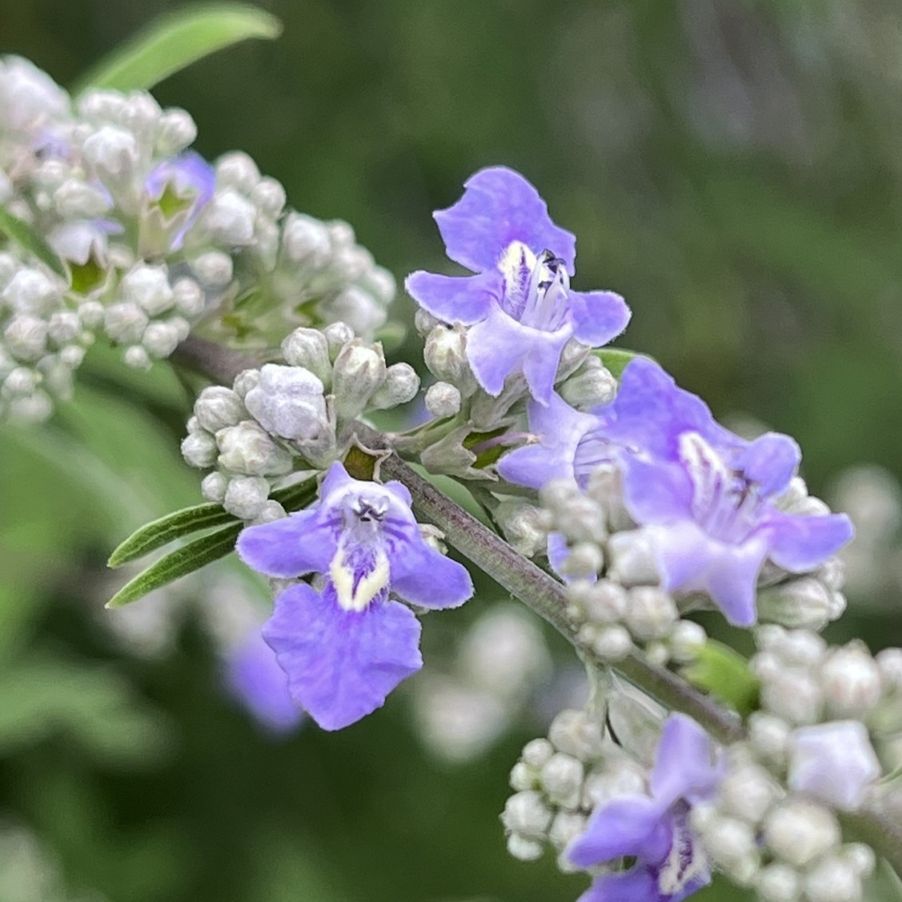
ニンジンボクの枝は樹皮が褐色で、不規則に浅く裂けます。葉は小葉3~5枚の掌状複葉で対生。小葉は広披針形で、粗い鋸歯があります。花は小さな5裂の唇形花で淡い青紫色。枝先の節々に集まって咲き、円錐花序を形成します。花後は球形~倒卵形の核果を結び、熟すと黒色に。
ニンジンボクの利用
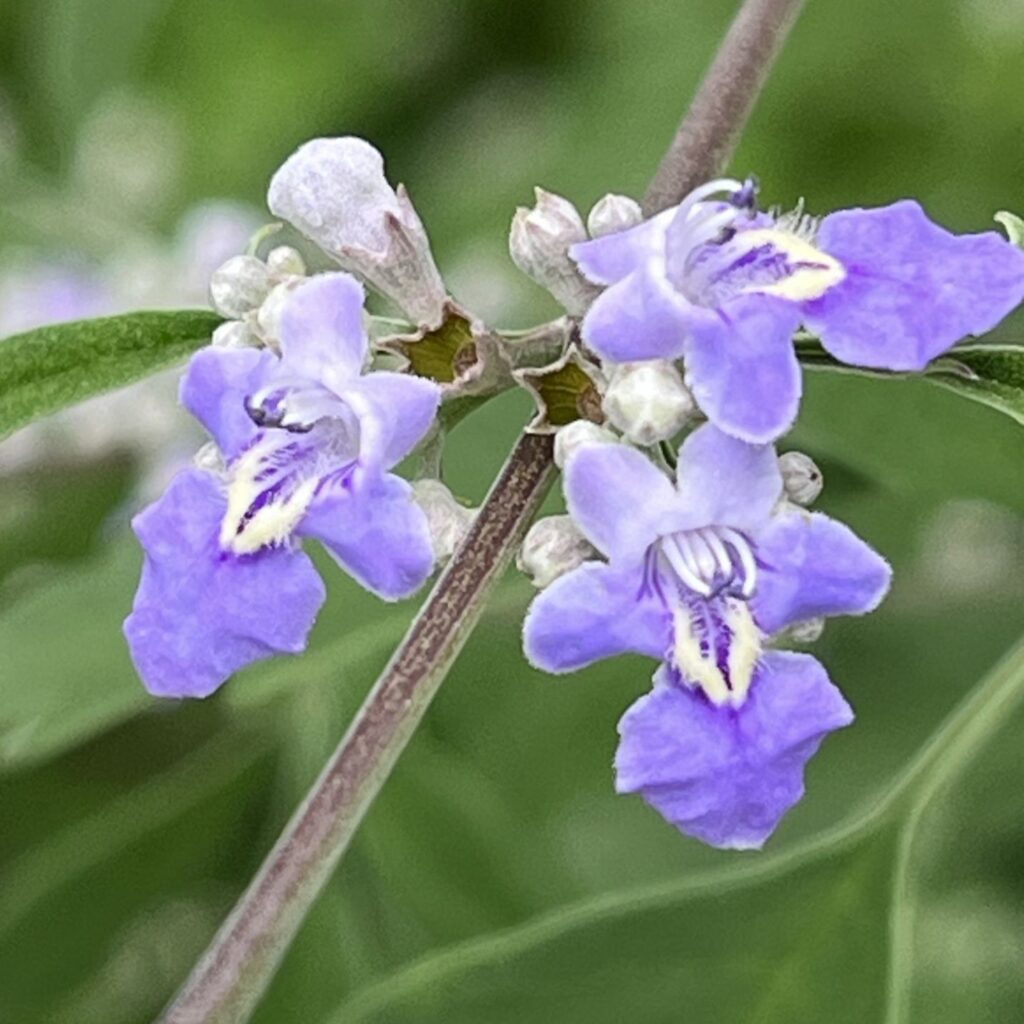
ニンジンボクは観賞用に庭園や公園で植栽される一方、生薬「牡荊子」として、果実が咳や喘息、腹痛などの風邪に用いられました。また、生薬「牡荊」として、根を痰切りや発汗、茎を下痢や火傷、葉を寝違えや脚気の腫れなどに。果実や葉の芳香がお茶や料理にも用いられました。
Five-leaved Chaste Tree
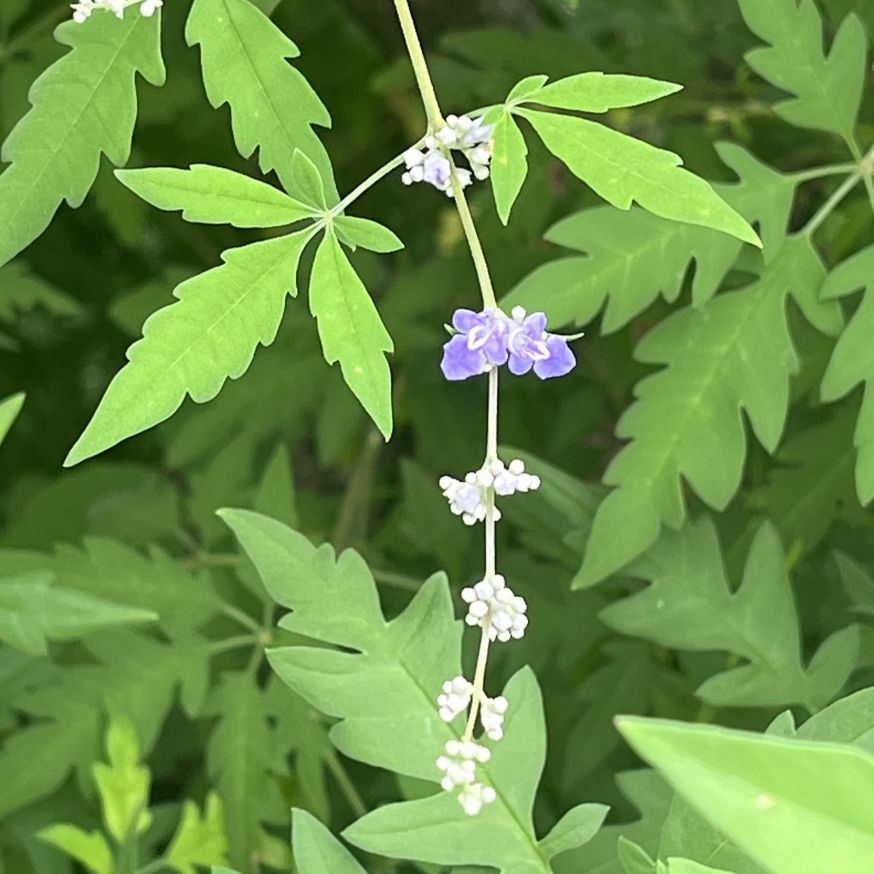
Five-leaved Chaste Tree is a deciduous shrub of the Lamiaceae family. It is native to China. It is distributed in South Asia, Southeast Asia, and the Pacific region. It was introduced to Japan in the 18th century for medicinal purposes, and its planting spread from the Edo Shogunate’s herb gardens to all over the country. It is characterized by its freshly fragrant leaves and cute lip-shaped flowers. Its flower language is “secret compassion.”
The Japanese name of the Five-leaved Chaste Tree means “Ginseng Tree.” This is because its leaves resemble ginseng. The Latin genus name Vitex means “woven with flexible branches,” and the branches were once used to make baskets. The specific name negundo comes from the fact that the leaves resemble those of Acer negundo.
The branches of the Five-leaved Chaste Tree have brown bark and irregular shallow lobes. The leaves are palmately compound with 3 to 5 leaflets arranged in opposite rows. The leaflets are broad lanceolate with coarse sawtooth. The flowers are small, five-lobed, labiate, and pale blue-purple. The flowers bloom in clusters at the joints of the branches, forming a panicle. After flowering, the tree produces spherical to obovate drupes that turn black when ripe.
The Five-leaved Chaste Tree is planted in gardens and parks for ornamental purposes, while its fruit is used as a herbal medicine to treat colds such as coughs, asthma, and stomachaches. The roots are also used to clear phlegm and induce sweating, the stems for diarrhea and burns, and the leaves for stiff necks and swelling caused by beriberi. The aroma of the fruit and leaves is also used in teas and cooking.



